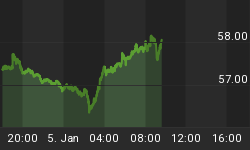The EPI had an interesting chart and comments in its report The Vast Majority of the 5.8 Million Missing Workers Are Under Age 55.
Since the start of the Great Recession over six years ago, labor force participation has dropped significantly. Most of the drop -- roughly three-quarters -- was due to the lack of job opportunities in the Great Recession and its aftermath. There are now 5.8 million workers who are not in the labor force but who would be if job opportunities were strong.
It is possible that some of these missing workers who are at or near retirement age have given up hope of ever finding decent work again and decided to retire early. Such workers may not ever be drawn back into the labor market, even when labor market conditions substantially improve. It is important to note, however, that more than 70 percent of the 5.8 million missing workers are under age 55. These missing workers under age 55 -- 4.2 million of them -- are extremely unlikely to have retired and are therefore likely to enter or reenter the labor force when job opportunities substantially improve.
If the missing workers were in the labor market looking for work, the unemployment rate right now would be 10.0 percent instead of 6.6 percent.
Core 25-54 Age Group
I like the above idea but a chart that shows changes over time would be better. Also, let's take out those under the age of 25 to see trends in the core 25-54 age group.
In general, those in age group 25-54 should be working, not retired, and not still in school.
Reader Tim Wallace, who somehow I neglected to mention in my Word of Thanks post on Sunday, once again provides the chart.
I added this addendum today: "A huge word of thanks to reader Tim Wallace who has provided countless charts on labor force, demographics, and energy."
Thanks Tim!
Age 25-55 Employment Data
| Year | Population | Labor Force | Employment | Full Time Employment |
| 2007 | 125,456 | 104,160 | 99,849 | 88,374 |
| 2008 | 125,440 | 104,021 | 99,503 | 88,101 |
| 2009 | 125,498 | 104,018 | 95,530 | 82,935 |
| 2010 | 125,178 | 103,191 | 93,348 | 79,948 |
| 2011 | 124,647 | 101,774 | 93,017 | 80,368 |
| 2012 | 124,341 | 101,276 | 93,346 | 80,721 |
| 2013 | 124,354 | 100,761 | 93,736 | 81,264 |
| 2014 | 124,439 | 100,904 | 94,666 | 82,248 |
Since February 2007....
- Population of age group 25-54 declined by 1,107,000
- Labor Force declined by 3,256,000
- Employment declined by 5,183,000
- Full-Time Employment declined by 6,126,000
The loss in employment in the core 25-54 age group is a whopping 5,183,000. Factoring in the decline in population, that is an excess job loss of 4,076,000!
The labor force should have declined by 1,107,000. Instead, it declined by 3,256,000. That is an excess labor force decline of 2,149,000.
Calculating a More Realistic Unemployment Rate
Here are the figures from the Latest Jobs Report. (Numbers in Thousands)

To calculate an more realistic unemployment rate, all we need to do is adjust the labor force then run the math.
Adding 2,149,000 back to the labor force we get 157,873,000. The number of employed is 145,266,000 as shown above. The ratio of employed to the labor force is 92.01 percent.
Via the above method, the unemployment rate would be 7.99 percent, not the 10 percent calculated by the EPI.
Regardless, 7.99 percent is way higher than the reported 6.7 percent.
Moreover, that 7.99 percent unemployment rate assumes everyone else who dropped out of the labor force either retired or is genuinely disabled (an admittedly ridiculous assumption, yet one that makes things seem better that they are).
Taking other age groups into consideration, I estimate the true unemployment rate (not counting part-time employment) is somewhere between 8.5 and 9 percent.
















